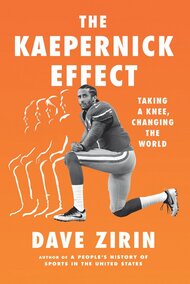Varsity Ruse: High School Football Today
THIS WEEKEND, the new Disney film "Invincible" opens in theaters across the country. It's based on the true story of Vince Papale, who in 1976, at age 30, became the oldest rookie in the history of the National Football League. Its story line speaks to the frustrated aspirations of millions of former high school football players whose dreams of playing in college, let alone professionally, weren't realized. They constitute a new American sports archetype: players who fell just short of making it to college-level football.
THIS WEEKEND, the new Disney film "Invincible" opens in theaters across the country. It's based on the true story of Vince Papale, who in 1976, at age 30, became the oldest rookie in the history of the National Football League. Its story line speaks to the frustrated aspirations of millions of former high school football players whose dreams of playing in college, let alone professionally, weren't realized. They constitute a new American sports archetype: players who fell just short of making it to college-level football.
Today, the competition to rise above the masses of high school football also-rans has become so intense and cutthroat that those who played the game as recently as a decade ago probably wouldn't recognize the sport. In many respects, the game has been "professionalized" - top players are scrutinized as if they were seasoned pros, with all the attendant pressures yet none of the financial rewards.
Numerous websites and trade publications cover the high school game. On Wednesday, USA Today trumpeted its high school football preview on its cover. The Sporting News High School Football Preview has become required reading for many sports fans. The NFL produces a website dedicated to the sport. Game coverage and scores regularly appear in newspaper sports sections. Many states even have high school football combines, complete with release forms, where players can run, jump and bench-press their way into the hearts of college scouts.
All told, about 1.5 million junior high and high school students play football, many of them chasing that elusive college scholarship and even a shot at a pro career. For many African Americans, who make up 34% of college players, this quest has added import. A survey by the Center for the Study of Sport in Society found that two-thirds of black males ages 13 to 18 believe that they can earn a living playing professional sports (more than double the proportion of young whites). For them, sports has become their most realistic chance of social and economic mobility.
But, according to a 2005 NCAA study, few will realize this dream. "About 5.8%, or approximately one in 17, of all high school senior boys playing interscholastic football," the study concluded, "will go on to play football at an NCAA-member institution." The odds of a high school footballer playing professionally are even longer, according to the study - approximately 9 in 10,000. The actual odds are probably even worse because the study did not distinguish between scholarship players and walk-ons.
This competition is why, for the serious high school player, there is no off-season. Spring football has become a sport and season unto itself. In between are specialty training camps, and for those who can afford it, individual instruction by former NFL players.
Once the traditional season kicks off, two-a-day practices in the August heat are routine. And, most alarmingly, use of performance-enhancing drugs is on the rise. One study by the Centers for Disease Control and Prevention showed that, from 1991 to 2003, steroid use among all high school athletes, male and female, had more than doubled, to as high as 6%. It can be safely assumed that use among footballers is higher because the sport puts a premium on strength and endurance.
Players who juice often feel they don't have a choice. High school football player Luis Ortiz told the Mosaic, a student journalism project of the San Jose Mercury News, that he believed steroids would smooth his path to a Division I scholarship. "I felt as if I was going to be lagging behind if I didn't take them. They are a huge advantage these days. [My teammates] all bought the steroids with the hope that they would change us into super athletes."
The effect of steroids and year-round weight training is apparent. Top high school linemen routinely tip the scales at more than 300 pounds. Fourteen of the current top 40 linemen prospects weigh this amount or higher. Twenty years ago, there weren't even 10 players in the entire NFL who weighed more than 300 pounds.
The combination of greater weight and August heat produces more fatalities. Frederick O. Mueller, director of the National Center for Catastrophic Sports Injury Research and chairman of the department of exercise and sport science at the University of North Carolina, Chapel Hill, reports 24 cases of heat-stroke death - mostly high school players - from 1995 to 2004.
"It's a matter of educating coaches and players over and over again," Mueller said. "They have to be extra careful in places like South Texas, where there is such high heat and humidity."
For those at the top of the high school sports world, even graduating with your class is increasingly rare. A recent USA Today survey of top-tier college athletic programs showed a 53% increase in players who graduated from high school a semester early so they could begin their studies and participate in spring football. The stakes for high school players have risen as the life choices for young people have narrowed. When athletes such as Ortiz feel that football is their only path out of poverty, they are not delusional; they just know the odds. In February, Congress sliced student financial aid by $11.9 billion, the deepest cut since the program began. As federal aid has shrunk, college tuition has spiraled, far outpacing the growth in household income.
As the high school football season begins and players, coaches, students and boosters prepare for the pep rallies, and Disney reminds us that "dreams do come true," a collective moment of sobriety is in order. Our teenage warrior athletes should be reminded that 0.09% of them will ever earn a professional paycheck. Tragically, too many kids feel that those are the best odds in town.
More columns ⇒
Support the Work
Please consider making a donation to keep this site going.
Featured Videos
Dave on Democracy Now!

